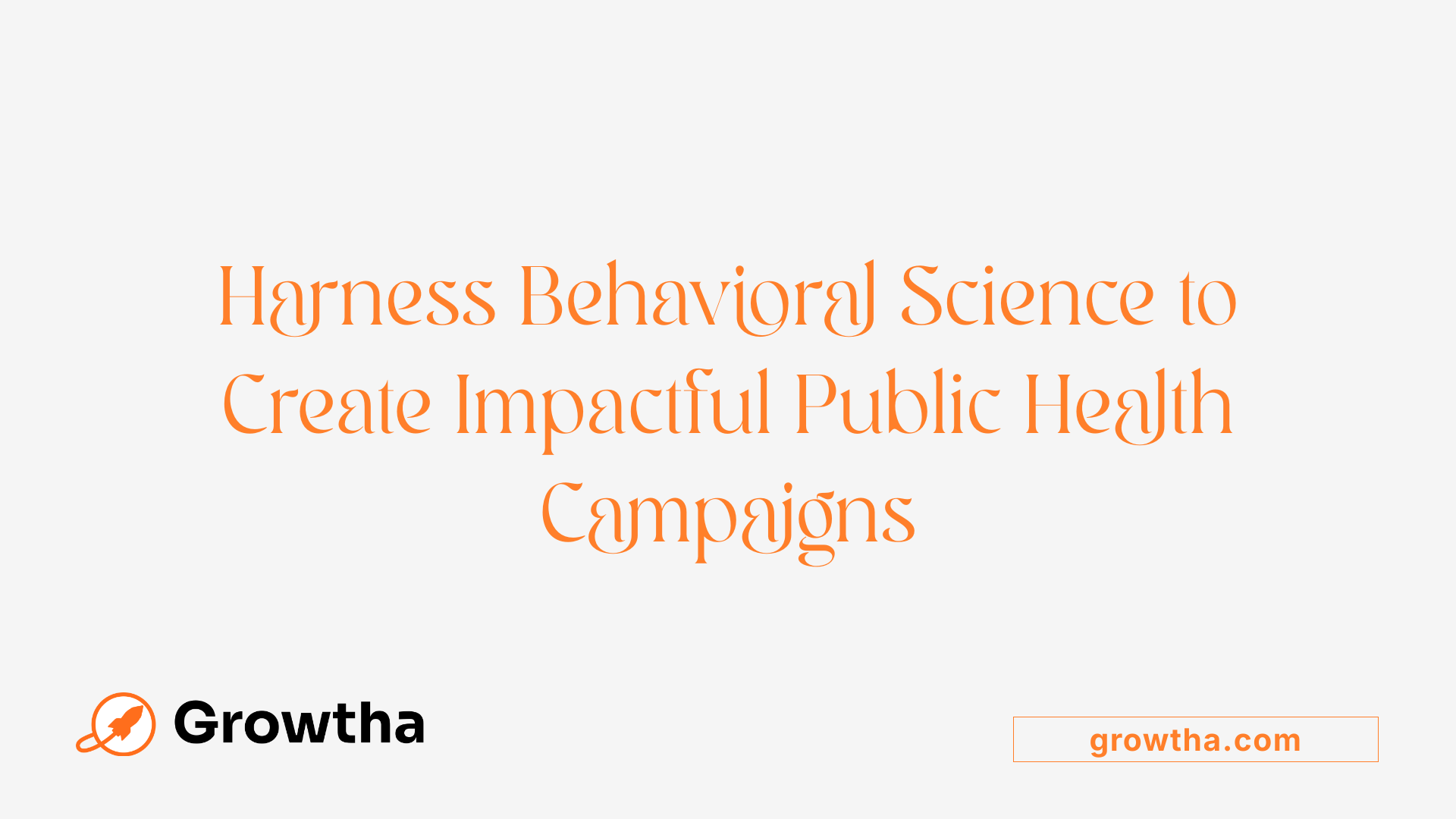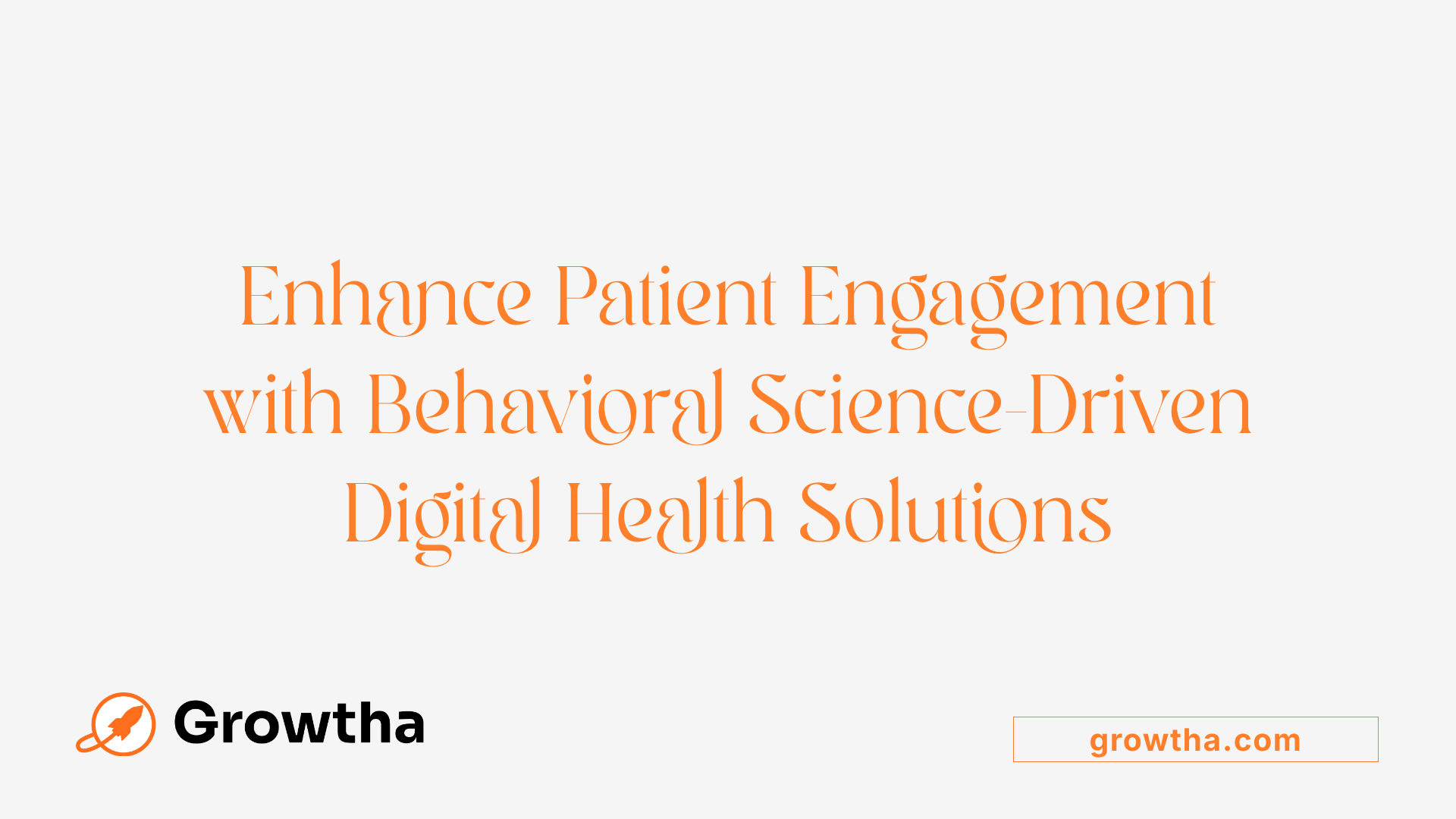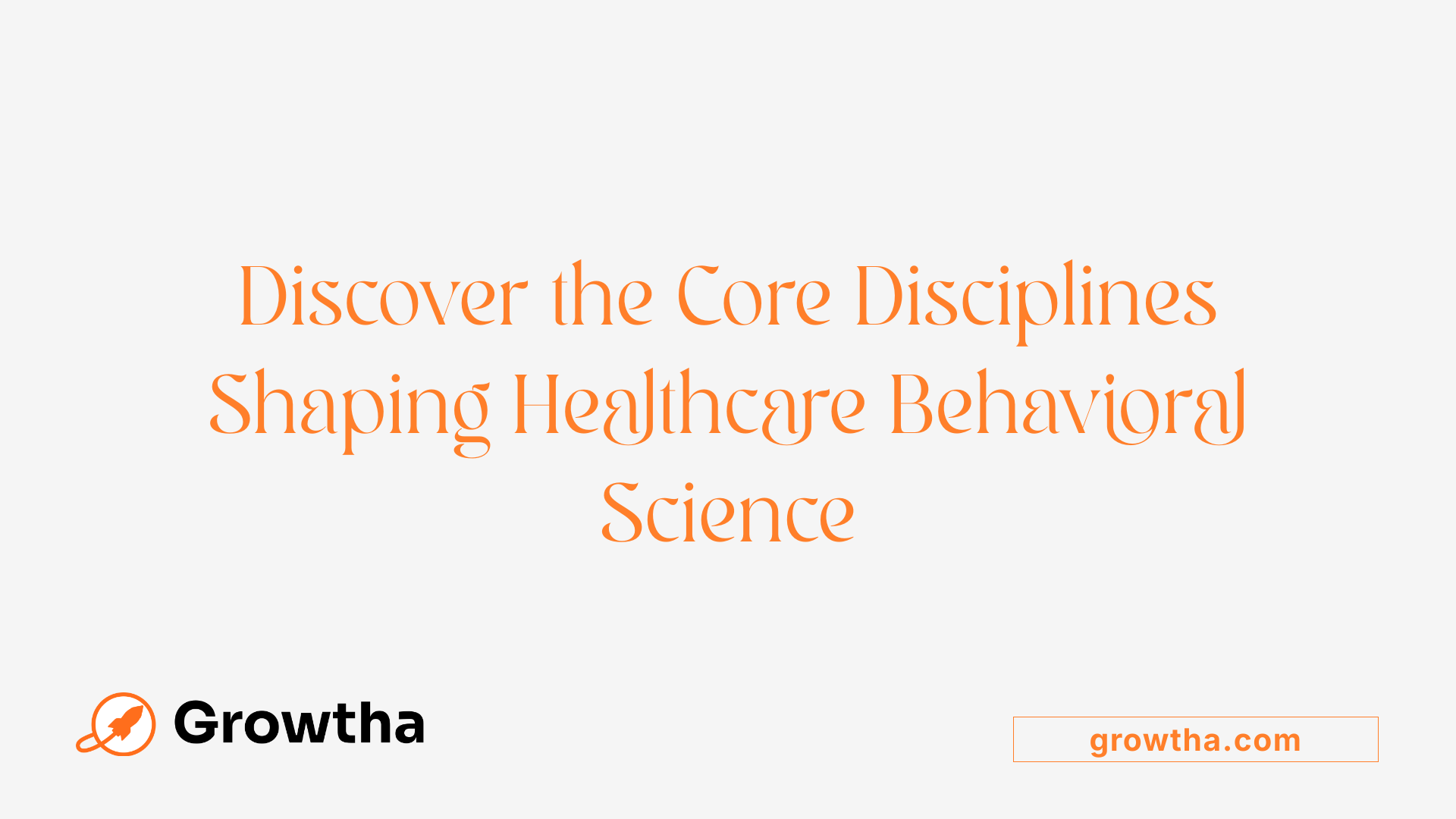The Role of Behavioral Science in Healthcare Communications
Transforming Healthcare Communication Through Behavioral Science


The Role of Behavioral Science in Healthcare Communications
Harnessing Behavioral Insights to Advance Health Outcomes
In an era where healthcare systems are striving toward ambitious goals such as reducing disease burden and boosting vaccine uptake, the strategic application of behavioral science within healthcare communication emerges as a pivotal facilitator. By understanding what drives human decision-making, health professionals and policymakers can craft more effective, personalized strategies that foster sustainable change. This article explores how behavioral science informs healthcare messaging, integrates into technological tools, supports policy development, and shapes the future of public health initiatives.
Understanding Behavioral Science and Its Significance in Healthcare Communication

What is behavioral science and why is it important in healthcare communication?
Behavioral science is the study of human thoughts, emotions, actions, and interactions with the environment. It uses scientific methods to understand how individuals and groups behave in various contexts.
This field draws from multiple disciplines, including psychology, economics, linguistics, and sociology. Together, these areas provide insights into decision-making processes, learning behaviors, social influence, and motivation.
In healthcare, behavioral science plays a crucial role. It helps identify the factors that influence how patients behave, whether in adhering to treatments, seeking care, or making health-related decisions.
By understanding these influences, healthcare providers can design more effective messages and interventions. For example, applying principles like nudging or framing can motivate patients to follow medical advice or adopt healthier habits.
Overall, behavioral science enhances our understanding of human behavior, enabling healthcare professionals to create personalized and persuasive communication strategies. This leads to better health outcomes, increased patient engagement, and more efficient healthcare systems.
Utilizing Behavioral Science to Drive Public Health Campaigns

How does behavioral science inform healthcare messaging and public health campaigns?
Behavioral science greatly influences how health campaigns are designed and executed by offering insights into human decision-making and behavior. It helps us understand not just what people know about health issues but also why they behave the way they do.
By exploring psychological, social, and environmental factors, behavioral science uncovers hidden barriers and motivators affecting health choices. For example, it examines cognitive biases like self-positivity bias, where individuals underestimate health risks, and social norms, which shape behaviors through peer influence.
This understanding allows public health professionals to craft messages that are more resonant and effective. Instead of simply presenting facts, campaigns use techniques like framing information in terms of gains or consequences, nudging individuals toward healthier behaviors without limiting choice.
Multidisciplinary approaches such as behavioral economics, social marketing, and human-centered design further refine messaging strategies. These methods ensure that communications are culturally sensitive, accessible, and aligned with the target audience's values and beliefs.
In practice, behavioral science tools like surveys, focus groups, and community engagement help identify what motivates specific populations. This data-driven approach results in campaigns that can better motivate change—be it increasing vaccination rates, promoting healthier lifestyles, or encouraging adherence to treatment plans.
Overall, integrating behavioral insights increases the likelihood of success for public health initiatives by promoting sustainable behavioral changes that lead to improved health outcomes.
Embedding Behavioral Science in Medical Communication and Digital Health Innovations

How can behavioral science enhance patient-centered messaging?
Behavioral science plays a vital role in shaping effective patient-centered communication. By understanding cognitive biases, such as optimism bias or self-positivity bias, healthcare providers can craft messages that resonate more deeply with individuals. Techniques like framing health information in terms of gains rather than losses, using social proof through testimonials, and applying positive reinforcement motivate healthier behaviors. Personalizing communication based on patients' health literacy and preferences ensures that messages are both accessible and compelling. Visual aids and plain language simplify complex information, making it easier for patients to understand and retain vital health advice.
What role does technological integration play in applying behavioral insights?
Technological tools are key in translating behavioral science into practice. Mobile health apps and wearable devices incorporate principles like nudging—sending reminders, default options, or alerts—to promote medication adherence or regular health check-ups. Digital platforms can harness behavioral data and analytics to tailor messages dynamically, enabling just-in-time interventions. Virtual and augmented reality simulate real-world scenarios for training healthcare providers or educating patients, helping overcome cognitive biases and habits. These innovations foster engagement, improve decision-making, and embed behavior change into daily routines.
How can training and education be advanced through behavioral science?
In healthcare education, behavioral science enhances training programs through immersive simulations and gamification. Virtual reality and serious games provide experiential learning, allowing clinicians and patients to practice procedures in risk-free environments. Continuous quizzing and knowledge-sharing platforms reinforce learning and keep behaviors aligned with best practices. Workshops led by behavioral scientists help healthcare teams understand and apply principles like the COM-B model, which focuses on capability, opportunity, and motivation. Such approaches foster ongoing professional development and improve the consistency and quality of care.
What is the impact of these integrations on health outcomes?
Integrating behavioral science into healthcare communication and technology results in more personalized, effective strategies that lead to better health behaviors and outcomes. When messages are tailored, timely, and delivered through trusted channels, patients are more likely to adhere to treatments and participate actively in their health management. Digital innovations enable continuous tracking and adaptive interventions, reducing disparities and making healthcare more accessible. As a result, public health initiatives become more efficient, ultimately contributing to the global goals of disease reduction, vaccine uptake, and epidemic response.
| Aspect | Application | Outcome | Additional Details |
|---|---|---|---|
| Patient Messaging | Framing, social proof, reinforcement | Increased engagement and adherence | Tailored to literacy and cultural context |
| Technology | Apps, wearables, virtual reality | Just-in-time coaching, real-world simulation | Uses behavioral data and analytics |
| Education | Simulations, gamification | Better clinician and patient training | Enhances decision-making skills |
How does integrating behavioral science support health equity?
By designing inclusive interventions that account for diverse backgrounds and barriers, behavioral science can help reduce health disparities. Culturally sensitive messaging, accessibility features, and community involvement ensure interventions resonate across populations. Combining digital tools with participatory approaches ensures the needs of underserved groups are addressed, promoting broader health equity.
Leveraging behavioral science in these ways aligns health systems with the goals of improved well-being, disease prevention, and equitable healthcare delivery.
Key Disciplines and Models Foundational to Behavioral Science in Healthcare

What are the key disciplines within behavioral science relevant to healthcare and communication?
Behavioral science draws from multiple fields to understand human decision-making and behavior, especially in healthcare. The main disciplines include anthropology, behavioral economics, cognitive psychology, consumer behavior, social psychology, and sociology. Each of these areas examines different aspects of how people judge traits, make choices, and are influenced by their social and environmental contexts.
Anthropology provides insights into cultural influences on health behaviors, while behavioral economics explores how incentives and biases affect decisions. Cognitive psychology investigates mental processes like perception, memory, and judgment, which are critical in understanding how patients process health information. Consumer behavior offers understanding of how individuals interact with health products and services. Social psychology and sociology focus on social influences, norms, and group dynamics that shape health-related behaviors.
Organizations like the University of Chicago Booth School of Business support research across these disciplines, fostering innovative applications in healthcare. Public engagement initiatives, such as Mindworks, demonstrate how these insights can be practically applied through experiments and interactive exhibits that influence everyday decision-making.
How does behavioral science help in motivating behavior change and improving health outcomes?
Behavioral science enhances health interventions by revealing the underlying neural, psychological, and social factors that drive health-related decisions. It emphasizes motivation and rewards—whether approach, avoidance, or assertion—that influence how and why people change behaviors.
Frameworks like the COM-B model (Capability, Opportunity, Motivation-Behavior) and Self-Determination Theory guide the creation of tailored strategies. These include nudges, coaching, and modifications to physical environments designed to foster intrinsic motivation and social support.
Evidence shows that applying these approaches can significantly improve health behaviors like physical activity, diet, and adherence to medications. They contribute to reducing health risks, managing chronic conditions, and encouraging healthier lifestyles.
Behavioral science also informs policies by addressing social, environmental, and contextual barriers. This holistic approach helps establish sustainable behavior changes, leading to better health outcomes and more effective public health efforts.
Innovations and Future Directions in Healthcare Behavioral Science
Technological advancements
Recent advances in technology are transforming how behavioral science is applied in healthcare. Digital tools like mobile health apps, virtual reality, and artificial intelligence (AI) allow for more precise targeting of interventions. For example, AI-driven algorithms analyze patient data to predict health behaviors and suggest personalized strategies. Virtual reality simulations enable healthcare providers and patients to practice procedures and explore health scenarios in a safe environment, fostering better habits and decision-making.
Personalization and adaptive interventions
Every patient has unique needs and preferences. Behavioral science now emphasizes personalized healthcare communication, tailoring messages based on individual health literacy and cultural background. Adaptive interventions dynamically adjust their content and approach in real-time, considering how a patient responds to previous messages. This flexibility ensures interventions are more relevant and effective, ultimately improving adherence to treatments and preventive measures.
Collaborative research and ethical considerations
The future of behavioral science in healthcare depends on multidisciplinary collaboration. Researchers, healthcare professionals, tech developers, and ethicists are working together to create evidence-based strategies that respect patient autonomy and privacy. Transparency and informed consent are essential when applying behavioral insights, especially with the increased use of digital and AI-powered tools. Ethical standards ensure that behavioral interventions empower patients without manipulation, fostering trust and sustainable health improvements.
Harnessing Behavioral Science for Better Health Outcomes
As healthcare systems navigate complex challenges and seek to enhance patient engagement and health outcomes, the integration of behavioral science into communication strategies and technological innovations offers promising pathways. From developing culturally sensitive public health campaigns to designing adaptive digital interventions, behavioral science provides the evidence-based, human-centered insights needed to motivate meaningful behavior change. Moving forward, continuous research, ethical practice, and interdisciplinary collaboration will be pivotal in harnessing the full potential of behavioral science to transform healthcare delivery and public health globally, ultimately fostering healthier communities.
References
- Harnessing the power of behavioural science to improve health - PMC
- Understanding the Role of Behavioural Science in Healthcare ...
- The Role of Behavioural Science in Optimising Healthcare ...
- Behavioral Science for Communications | Syneos Health
- Using behavioural science in communication to improve health in ...
- Leveraging Behavioural Science for Effective Healthcare ...
- Introduction to behavioral science and its practical applications in ...







